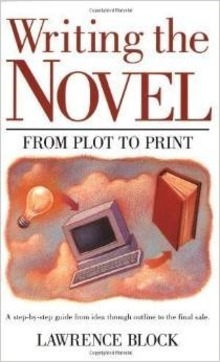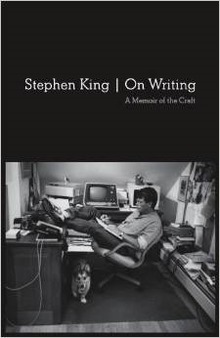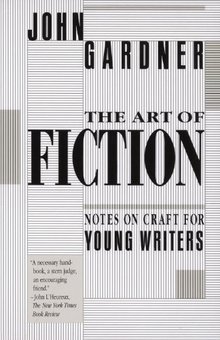Let Me Outline It For You
 To outline or not to outline? Ah, the perennial question. The question that’s answered in every possible way by all writers’ guides. The kind of question that often comes up when a writer is being interviewed: are you an “outliner” or are you a “pantser,” as in, do you fly by the seat of your pants? Some writers swear by one, and some swear by the other.
To outline or not to outline? Ah, the perennial question. The question that’s answered in every possible way by all writers’ guides. The kind of question that often comes up when a writer is being interviewed: are you an “outliner” or are you a “pantser,” as in, do you fly by the seat of your pants? Some writers swear by one, and some swear by the other.
Which basically means writers do a lot of swearing.
Pantsers like to grab the end of a thread they see trailing out a door and follow where it leads – with a bit of guidance here and tweaking there, sure, but basically letting the story evolve organically, on its own feet as it were. This method has led to some of the best books ever, and when it works, it really works.
When it doesn’t, it doesn’t. I’ve had people tell me that they’ve gone as far as a couple of hundred pages before deciding the idea wasn’t going anywhere, and setting it aside. It takes a brave writer to do that.
 There’s a lot of truth in the idea that a pantser’s first draft is really an incredibly detailed outline. I think that’s going a bit far (it’s an idea that’s usually suggested by outliners) but I sympathize with the notion.
There’s a lot of truth in the idea that a pantser’s first draft is really an incredibly detailed outline. I think that’s going a bit far (it’s an idea that’s usually suggested by outliners) but I sympathize with the notion.
On the other hand, there are a variety of good reasons for writing outlines. In my case, it comes naturally from years of academic training. You really do write better essays, or articles, etc., if you sketch out an outline first. But having said that, the beauty of academic writing is that you already know how it ends. In fact, you don’t sit down to write until you do know.
Let me just take a minute to point out that while there are disciplines where you can get a paper out of determining that something doesn’t happen (“Aspirin does not cure typhoid” say researchers at Johns Hopkins) literature is not one of those disciplines. (Doctoral dissertation proposal to prove there are no allusions to hamburgers in Hamlet – rejected by graduate committee.)
So, because of that academic training, I do generally write outlines, though I’m a pantser by nature, starting off with a conversation or other encounter between two characters and then seeing where they go from there. Given that they appear to be a certain kind of person, what kind of problems might they run into? What kind of world do they live in? Most of this evolves as I’m actually writing.
Still, at some point I write an outline. Why? Because my publisher would like one. Now I already have a publisher (DAW Books) so I’m selling on spec, that is, the novel doesn’t exist yet. So, as the people who are going to cover the expenses, the publisher wants to know that there’s a whole idea there before giving me the advance.
But that’s terrible, dedicated pantsers say. Now you’ve got to write what the outline says, no matter what. Now you’re tied down, in a trap, with no options. This is why people don’t like outlines.
 No, say I. Nothing like it. That’s like thinking if you buy a pair of shoes you have to wear them every day. Or that because you’ve tried them on, you’re required to buy them. The truth is the outline is just as much a work of fiction as anything else you might write. You can file it and never look at it again, just go ahead and write. Not even the publisher who paid you the advance is going to come after you saying “But where’s the dog? In the outline there’s a dog?” They won’t have looked at the outline again either.
No, say I. Nothing like it. That’s like thinking if you buy a pair of shoes you have to wear them every day. Or that because you’ve tried them on, you’re required to buy them. The truth is the outline is just as much a work of fiction as anything else you might write. You can file it and never look at it again, just go ahead and write. Not even the publisher who paid you the advance is going to come after you saying “But where’s the dog? In the outline there’s a dog?” They won’t have looked at the outline again either.
The other day, however, I did have occasion to look at my outline. Why? Because I thought I might have given myself some hints on how I was going to solve the problem that makes up the spine of the novel I’m working on right now. Guess what? I had written something, of course, but it amounted to “good guys then overcome bad guys.” Maybe not in those words exactly, but that’s more or less the gist. This didn’t worry me, or my publisher, at the time because if you know anything you know that things change as the book is being written.
“Wow,” I said to myself. “That was useful.” Because even though I had an outline, I’d run into a pantser problem.
A problem that got solved, but in an entirely different way.
Violette Malan is the author of the Dhulyn and Parno series of sword and sorcery adventures (now available in omnibus editions), as well as the Mirror Lands series of primary world fantasies. As VM Escalada, she writes the Faraman Prophecy series, currently in two books, Halls of Law, and Gift of Griffins. Like her page on Facebook and follow her on Twitter @VioletteMalan.
As an academic non-fiction writer and college teacher, I always start with an outline because it helps me to orient what I’m attempting to do, or better, what I initially think I’m attempting to do. However (big however), I always end up diverging from it (thus my pantser bent). Nevertheless, I’m sure that my writing would not be as good as it ends up being (I’ll let others judge the end product) if I had not started with an initial outline.
In a similar way, when I teach academic writing to college students, I’m adamant that students need to start with some sort of (rough) thesis statement and outline before writing any arguments or introduction, etc. However, I encourage students that they will almost always need to go back and critique their thesis statement after they finish the paper. In fact, a common freshman/sophomore mistake in college writing is having a vague thesis statement that doesn’t reflect very well what the student did in the paper. But, interestingly, students will sometimes have a good clear thesis statement in their concluding paragraph. My take on this is that students usually have a better idea of what they did, after they did it, than what they thought they were attempting to do, before they did it.
I said all that (I think), to simply affirm the general tenor of your post. Planning and pantsing both have their place.
Outlines are essential, even if they’re only mental. I wouldn’t even get started in anything longer than flash fiction without one. I think of them as springboards to get you going. And yes, I’ve modified them as the work evolves. That’s why they are there.
Stephen King exemplifies all that is good and bad about pantsers for me: that is, they tend to focus on telling a story as vividly as possible and don’t worry about its internal logic (or character arcs)until later on. A negative consequence is that pantsers tend to start out strong but their endings are often problematic. A plus is that – by refusing to worry about plot coherence – they write stuff that would never get past the drawing board, if they were outliners. An outliner could never have written ‘The Gunslinger’ for example, because from a world-building point of view, the setting makes little or no sense.
I’ve always felt like ‘pantser’ was an insult. It has that kind of feel to it, in my mind. “You don’t follow an outline? You’re a filthy pantser, aren’t you?” I let ideas rattle around my head a while and then go. For longer works, I will jot down some ideas to remind myself of something I might want to do later, but that only faintly resembles an outline, and it may not come to fruition anyway because the plot simply went elsewhere. Granted, I’ve only sold short stories to date, so as to how effective my technique may be with novels is questionable. But I’ll take that risk; it’s simply what works for me.
I’ve enjoyed reading the Paris Review Interviews with famous writers (I’ve read two of the four volumes) and I recommend them to anyone interested in writing – or just interested in fascinating, eloquent people. One thing they prove is that there is no one “best” method of writing. From T.S. Eliot to James M. Cain, from Toni Morrison to Stephen King, there are as many methods as there are writers. Find what works for you and do that.
Tony Hillerman’s thoughts on outlining, from a post I did here at Black Gate. And if you don’t know who Tony Hillerman is, you need to read this three-post series!
‘Hilllerman tried hard to be an outliner, but he found he was a panster (so-called ‘writing by the seat of your pants’). He wrote the essay “Building Without Blueprints” for Writing Mysteries: A Handbook by the Mystery Writers of America. “Some people, sometimes, can write a mystery novel without an outline. Or, put more honestly, if you lack the patience (or brains) to outline the plot, maybe you can grope your way through it anyway, and sometimes it’s for the best.“
He had attempted to outline his first three books (Blessing Way, Fly on the Wall and Dance Hall of the Dead) but failed. So, he outlined a couple of chapters ahead and slogged his way through to the finish of each. He tried to outline the fourth, Listening Woman, and was stuck. So he decided to start writing the first chapter. He did so. And it didn’t work, so he rewrote a new opener. And again a third time, changing the outline as he went. More changing for the second chapter. And the third. Finally, he accepted that his writing style did not benefit from an outline.
Now, some writers need one, some don’t (I find I get stuck less if I’ve got a decent outline). But Hillerman listed the ingredients that let his imagination come up with what he needs:
A setting with which he is intimately familiar;
A general idea of the nature of the mystery to be solved;
A theme; and
One or two characters – in addition to the police protagonist.
Hillerman lets the story take him where it will. Janet Pete unexpectedly popped into being in Skinwalkers and certainly impacted Jim Chee’s life. This approach may not work for everyone, but it does for Hillerman.